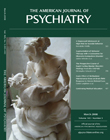Depression Status as a Confounder in the Effects of Antidepressants on the Gestation Age
To The Editor: In the August 2007 issue of the Journal , Rita Suri, M.D., et al. concluded that, in pregnant women with major depressive disorder, there are no significant effects of depression on infant gestational age and the use of antidepressant medication increases the risk of preterm birth and lower gestational age. We feel that this conclusion may be premature.
First, an average gestational age of 38.5 weeks in the group of women who received antidepressants may not be as significant in clinical practice as in a preterm birth of less than 37 weeks. Second, the evidence for non-significant differences in the depression status between the group of women that did receive antidepressants and the group that did not receive antidepressants is not strongly supported. As we are aware, because of concerns that drugs may be harmful to the fetus, it is reasonable to consider that those women who did receive antidepressants may have experienced a more severe depression than those who did not. To compare the study groups, the authors used the maximum Hamilton Depression Rating Scale (HAM-D) scores and the proportion of monthly visits that met Structured Clinical Interview for DSM-IV (SCID) criteria for depression (i.e., five or more depressive symptoms over 2 weeks) to represent depression status. However, these criteria might not fully reveal the extent of depression. For example, if a subject had four visits, with HAM-D scores of 23, 10, 10, and 10, and her symptoms that met SCID criteria were 8, 1, 1, and 1, then the proportion of her visits that met SCID criteria would be 0.25. In comparison, another subject may have had HAM-D scores of 23, 20, 20, and 20, and her number of symptoms that met SCID criteria may have been 5, 4, 4, and 4. Thus, the second patient would have the same 0.25 proportion as the first. It may be problematic that these two patients would have different mean HAM-D scores (20.7 versus 13.2), yet their maximum scores and the proportion of their visits that meet SCID criteria for depression would be the same. Third, the authors used a regression model control for depression status represented by the proportion of visits that met SCID criteria. Given that the HAM-D is the widely-used tool for the assessment of depression in many studies, we suggest that it is more proper to control for the mean HAM-D score rather than the proportion of visits meeting SCID criteria to represent the degree of depression.
In summary, we feel that Dr. Suri et al. may have potentially underestimated the differences in the two depressed groups. Nevertheless, the study has shown that antidepressants might play an important role in increasing the risks at birth.
1. Suri R, Altshuler L, Hellemann G, Burt VK, Aquino A, Mintz J: Effects of antenatal depression and antidepressant treatment on gestational age at birth and risk of preterm birth. Am J Psychiatry 2007; 164:1206–1213Google Scholar



